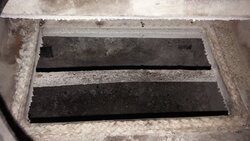This is a thread about what to do when you see your catalytic probe thermometer going high, not the stovetop temp. We all know this happens when your firebox is producing very large amounts of un-burned wood gas, often shortly after turning down the primary air control early in the burn cycle.
Conventional wisdom says to open up the primary air control, to burn more of that wood gas in the firebox, in theory sending less of it as un-burned fuel to the catalytic combuster. However, I believe this theory ignores the reality that when this cat over-temp situation actually happens, you are typically sitting on a very large load of un-burned fuel.
My one or two experiences with this very early in my burning career put me in the situation that raising the air control to burn more of the wood gas in the fire box lead to what felt like a run-away situation. In other words, cat goes hot, raise air control a bit to cool cat, and firebox takes off more. Then try to lower, and cat tries to go even hotter, faster!
What is your experience with this? What have you done that has worked? What have you done that has failed? Do you believe you have the solution?
Conventional wisdom says to open up the primary air control, to burn more of that wood gas in the firebox, in theory sending less of it as un-burned fuel to the catalytic combuster. However, I believe this theory ignores the reality that when this cat over-temp situation actually happens, you are typically sitting on a very large load of un-burned fuel.
My one or two experiences with this very early in my burning career put me in the situation that raising the air control to burn more of the wood gas in the fire box lead to what felt like a run-away situation. In other words, cat goes hot, raise air control a bit to cool cat, and firebox takes off more. Then try to lower, and cat tries to go even hotter, faster!
What is your experience with this? What have you done that has worked? What have you done that has failed? Do you believe you have the solution?



